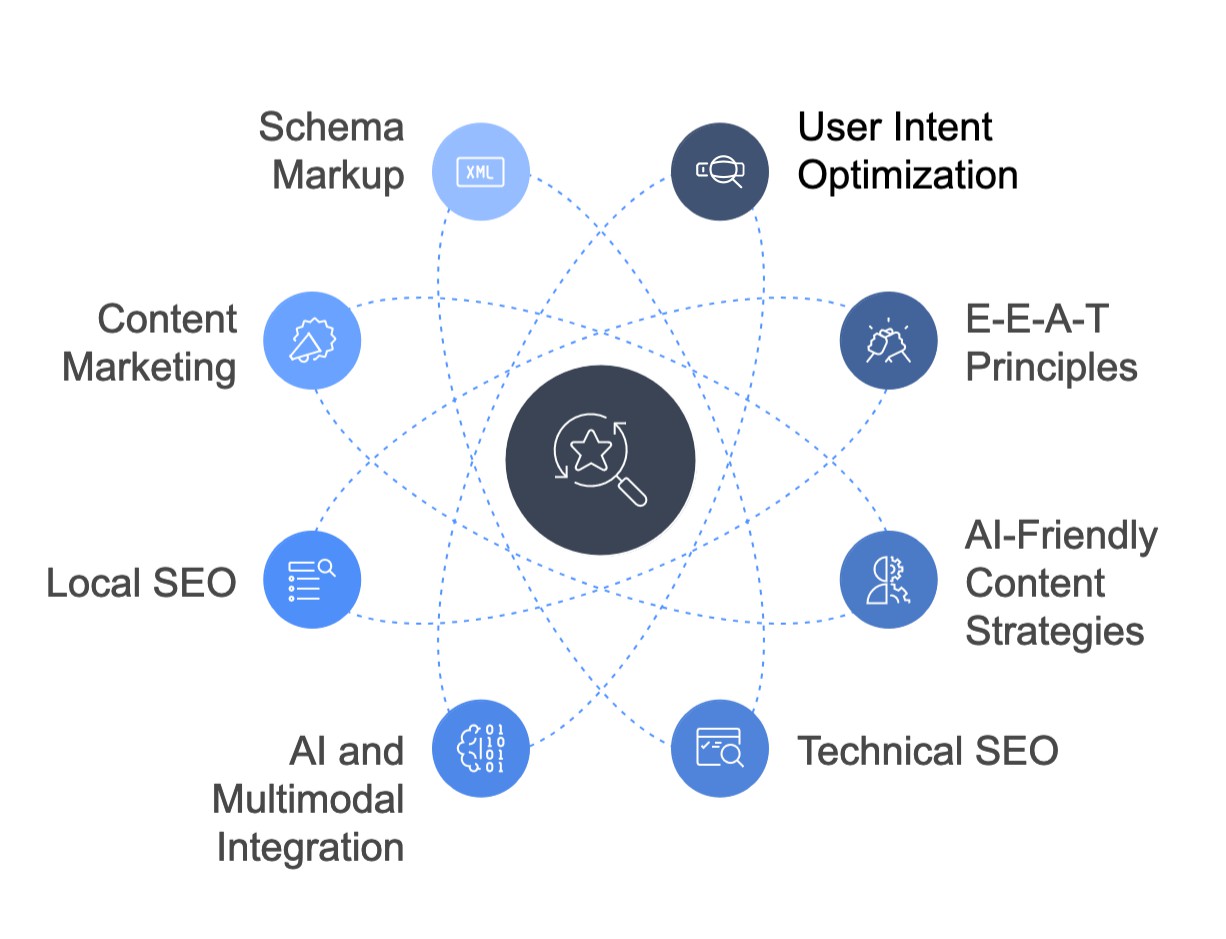Ways To Be More Compatible With Search Engines and AI
Focus on creating high-quality, user-focused content while optimizing for technical SEO and AI-driven search changes. Here are 10 ways you can become more compatible with AI and Search Engines right now:
1 Optimize for User Intent
- Understand Search Intent: Create content that answers specific questions or fulfills the needs of your audience.
- Example: If someone searches “creative trade show booth ideas,” write a blog showcasing unique designs or success stories.
- Use tools like Google Search Console, AnswerThePublic, or SEMrush to identify questions your audience asks.
2 Leverage E-E-A-T Principles
Google prioritizes content that demonstrates Experience, Expertise, Authoritativeness, and Trustworthiness(EEAT):
- Show Expertise: Include case studies, client testimonials, and certifications to establish credibility.
- Author Bios: Highlight team members with experience in trade show design.
- Cite Reliable Sources: Link to trusted external sources when providing data or insights.
3 Use AI-Friendly Content Strategies
- Write Naturally: Use conversational language, as AI interprets it better for voice and generative searches.
- Create Structured Content: Use headers (H1, H2, H3), bullet points, and lists to improve readability for humans and search engines.
- Optimize for Featured Snippets: Summarize answers clearly at the beginning of your content to appear in snippet boxes.
4 Technical SEO Best Practices
- Mobile-Friendly Design: Ensure your site is responsive and works well on all devices.
- Improve Page Speed: Compress images, use caching, and optimize code to load pages faster.
- Optimize Core Web Vitals: Enhance metrics like Largest Contentful Paint (LCP), First Input Delay (FID), and Cumulative Layout Shift (CLS).
- Secure Your Site: Use HTTPS to ensure your site is secure and trusted.
5 Integrate AI and Multimodal Features
- Optimize Images and Videos: Add alt tags and schema markup for media files. For trade show services, include videos or image galleries of booths.
- Leverage Google Lens: Ensure your product and service visuals are detailed and clear for users performing image-based searches.
- Multilingual Content: Offer translated pages to target diverse audiences, if applicable.
6 Incorporate Local SEO
- Google My Business Profile: Optimize it with accurate NAP (Name, Address, Phone) info and include reviews.
- Local Keywords: Use geo-specific keywords like “custom trade show booths in Chicago.”
- Localized Content: Create blog posts or resources relevant to your region’s trade shows or industry trends.
7 Content Marketing Strategy
- Create Valuable Content: Write blog posts, guides, and FAQs that answer your audience’s questions.
- Focus on Visual Content: Publish trade show booth design ideas with images, videos, or even 3D walkthroughs.
- Regular Updates: Refresh old content to keep it relevant and ensure it performs better in AI-driven results.
8 Use Schema Markup
Add structured data (schema.org) to your website to help search engines understand your content better:
- Local Business Schema for your company details.
- Product Schema for services like booth rentals or exhibit design.
- FAQ Schema to appear in rich snippets for common queries.
9 Stay AI-Ready
- Long-Tail Keywords: AI focuses on conversational queries. Optimize for longer, natural-sounding keywords.
- Voice Search Optimization: Write content that answers “how,” “what,” or “why” questions.
- Adapt for Generative Search: Ensure your content is well-organized and comprehensive so Google AI can easily summarize it.
10 Track and Adapt
- Use Analytics: Monitor Google Analytics and Search Console for performance insights.
- Stay Updated: Follow SEO trends and Google’s algorithm updates regularly.
- Test Regularly: Run audits for broken links, site errors, and outdated content.
[mbhi location="Main Location"]

